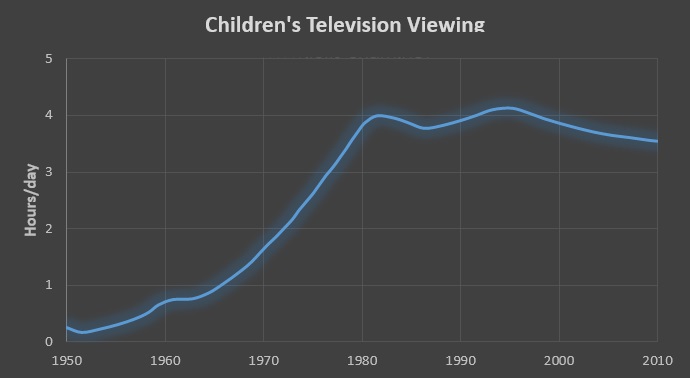The graph below shows the number of hours per day on average that children spent watching television between 1950 and 2010. Summarise the information by selecting and reporting the main features, and make comparisons where relevant.
Sample 1
The line graph illustrates the hours per day between the years 1950 and 2010 spent by children watching television.
Overall, it is demonstrated that the number of hours spent by children watching television kept on increasing over the years, but a steadily decline at the two end years.
Children in the year 1950 spent 0.5 hours in the day watching television. With time, it’s kept on increasing steadily along the slope with 0.7 and 1.8 hours spent in the day in the years of 1960 and 1970 respectively. Watching of television by children peaked in the year 1980 as they spent around 4 hours per day.
Between the years 1980 and 1990, there was a fluctuation in the hours spent watching TV but hit a peak of around 4.1 hours between the years of 1990 and 2000. From the year 2000, children’s television viewing steadily declined in slope, recording 3.6 hours per day in the year 2010.
Sample 2
Over a 60-year period, the line graph compares the numbers for average daily hours spent viewing television by youngsters.
During the time period depicted, there was significant growth in television viewing. However, there have been occasional shifts in this pattern.
Between 1950 and 1960, there was a minor increase in the average amount of time children spent in front of the television, which was around 0. 7 hours per day. Furthermore, between 1960 and 1980, there was a massive increase in the number of watching times, ranging from 0.7 to 4.
Over the next ten years, the average number of hours that young children spent watching television on a daily basis fluctuated by four. Nonetheless, between 1995 and 2010, the average number of hours spent watching television gradually decreased.
Follow Us on Facebook


